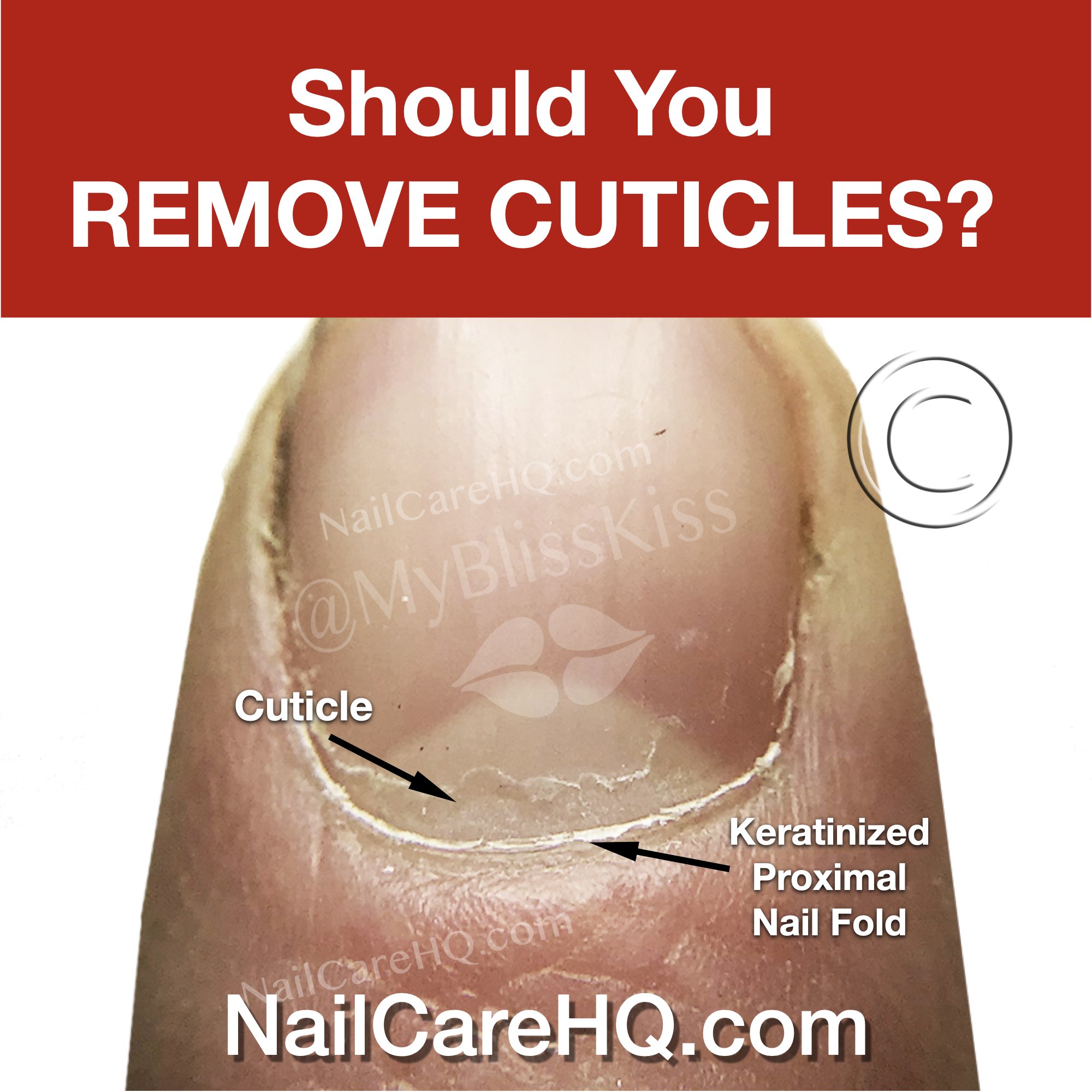People often ask me if they should remove their cuticles. This is a very hot topic filled with misinformation.
If you don’t wear nail polish or other nail enhancements, the answer is NO!
For a lot of people, removing cuticle tissue is NOT necessary.
There are only two types of people who need to remove their cuticles.
- You wear solvent-resistant nail enhancements like gel, acrylic, polygel, or dip nails.
- You wear traditional nail polish AND it chips at your cuticle line.
Notice how I don’t include nail polish in the list in #1? There’s a reason for this.
Before I explain more, let’s get some clarity about where the cuticle actually lives.
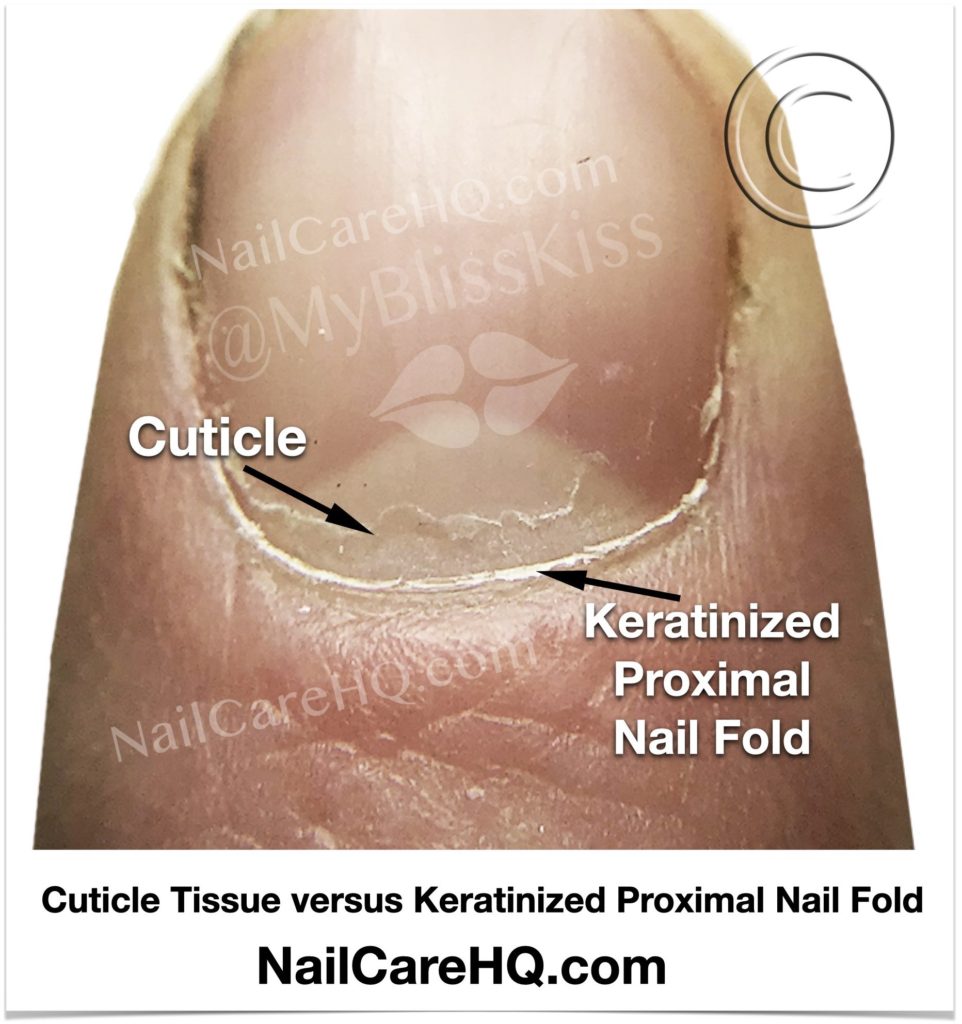
If you’re new to my articles, the truth might surprise you.
For most of us, we learned the names of different parts of our body in elementary/primary school.
We were incorrectly taught that the band of skin at the base of the nail is the cuticle.
This band of skin is actually the keratinized proximal nail fold.
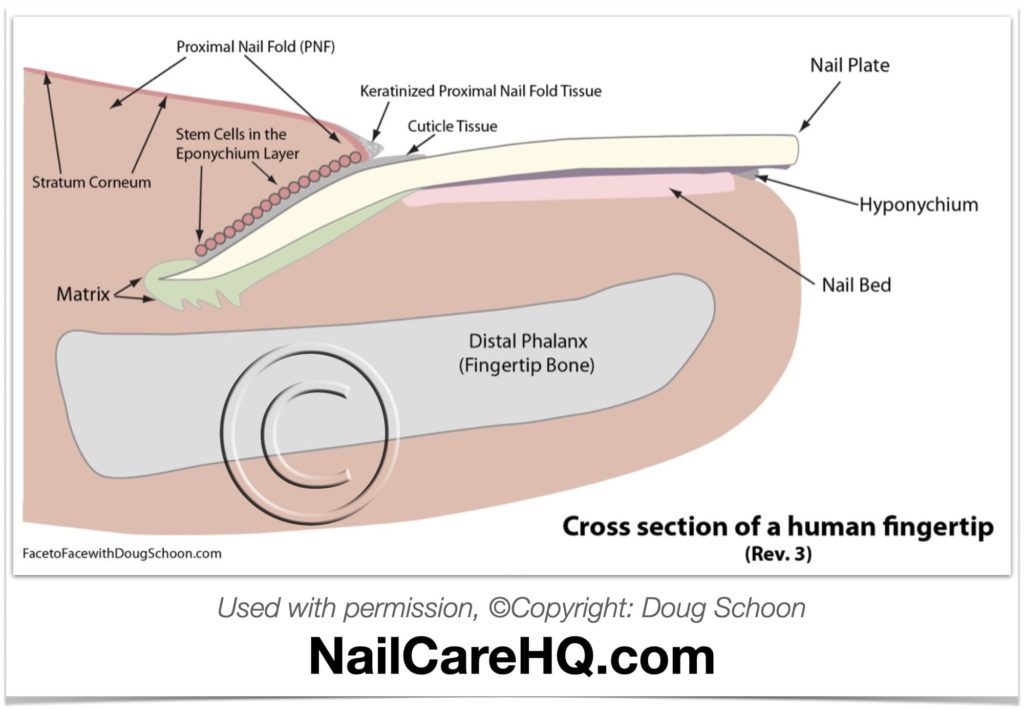
Never Remove Cuticles? Really?
If you don’t wear nail enhancements, you NEVER need to remove the cuticles.
Refer to the photo above. The cuticle is actually a thin layer of colorless, nonliving tissue that sticks very tightly to the freshly made nail plate.
Combined with the keratinized proximal nail fold, the cuticle creates the most important guardian seal protecting the nail matrix from germs and bacteria.
Cuticle Confusion
Does this sound like you?
You are new to learning how to improve your nail care. You hop on the internet and YouTube for answers.
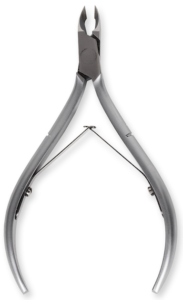
You keep hearing/reading that you should remove the cuticle. But seemingly respectable websites, like WebMD, also have articles that tell you to never cut your cuticles.
Your anatomy lessons in school have set you up to make the wrong conclusion.
You assume that they’re talking about what “you think” is the cuticle.
In addition, it isn’t helpful that there is a product called the “cuticle cutter.” Now you assume that cuticles should be cut.
Again, incorrect.
The real truth is that gentle scraping is the only way to remove cuticles.
Reader Beware!
I write a lot that it’s important to find respectable resources who write truthful content.
But the internet is now a landmine of myths, falsehoods, and fear-mongering. How are you supposed to know?
The following photo is a snapshot of the beginning of an article published on WebMD. It is one of the thousands of articles that make me want to pull my hair out in frustration.
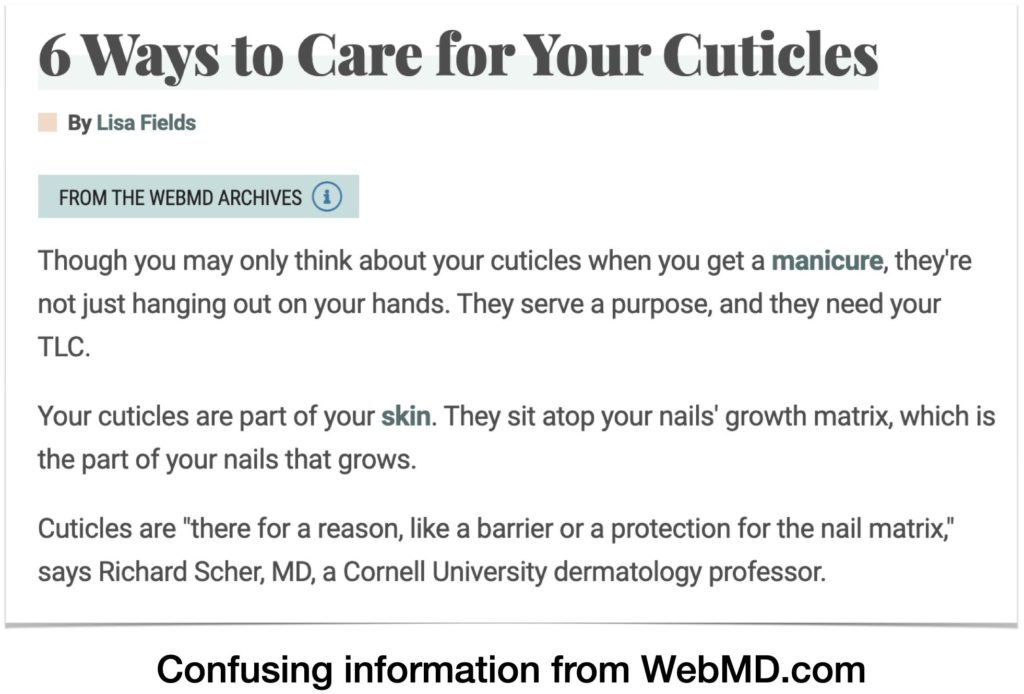
This article was written by a freelance author who is not a doctor. As you’ve already learned, she clearly doesn’t know the correct location of the cuticle.
As a result, the article is completely useless. But most people don’t know that and read it as truth.
Then to compound the problem, the article is reviewed by a doctor, who apparently approved this piece of “content” as truthful.
The Rise and Fall of WebMD
Sites that used to be respectful resources usually end up falling into the “cater to the Google algorithm” mentality. This is what has happened with WebMD.
WebMD started June 14, 1996 as Healthscape. In 1999 it was part of a three way merger with Sapient Health Network (SHN), Direct Medical Knowledge (DMK) and Healtheon. Articles were written by doctors.
In 2013, the Chicago Tribune reported that WebMD, “has struggled with a fall in advertising revenue with pharmaceutical companies slashing marketing budgets as several blockbuster drugs go off patent.” In response, WebMD began investing in changes to its site in order to entice users who use its site seeking specific information to linger on the site reviewing other material. ~Source: Wikipedia.org/wiki/WebMD
Since WebMD is now financed by advertising, third-party contributions, and sponsors, “investing in changes” means offering more content to keep the Google machine happy.
WebMD’s network of websites reaches more unique visitors each month than any other leading private or government healthcare website.
Writing in The New York Times Magazine in 2011, Virginia Heffernan criticized WebMD for biasing readers toward drugs that are sold by the site’s pharmaceutical sponsors, even when they are unnecessary. She wrote that WebMD “has become permeated with pseudo-medicine and subtle misinformation.“
Julia Belluz of Vox criticized WebMD for encouraging hypochondria and for promoting treatments for which evidence of safety and effectiveness is weak or non-existent, such as green coffee supplements for weight loss, vagus nerve stimulation for depression, and fish-oil/omega-3 supplements for high cholesterol. ~Source: Wikipedia.org/wiki/WebMD
Do I Even Have Cuticles to Remove?
Did you know that some people don’t have any cuticles on their nail plates?
Might seem strange, but true.
Dead skin cells continually slough off of our bodies. We often speed up the process by exfoliating in the shower.
Living life with our hands usually provides plenty of opportunities to naturally exfoliate the cuticle from our nail plate; shoving our hands in pockets, grabbing loads of laundry, digging through our purses or backpacks, even drying our hands on a towel.
Removing What Isn’t There
If you lived in southern Florida or Fiji where it never freezes, and I told you to scrape the ice from your car windshield during the winter, you would think I had lost my mind. It seems a little crazy to scrape nonexistent ice.
The same is true about the cuticle.
It’s pretty challenging to see a thin, colorless layer of tissue. It’s even harder to see if it has rubbed off!
Universal Truth
Have you ever applied a messy manicure and noticed that the polish came right off your skin in the shower?
Nail enhancement products don’t bond to skin.
Companies formulate enhancements to bond to the hard keratin structure of our nails.
When to Scrape
If you wear any sort of solvent-resistant enhancement like gel, polygel, acrylic, or dip nails, removing the dead cuticle on the nail plate is important.
“During a properly performed manicure, the keratinized proximal nail fold is gently pushed back to expose the cuticle. The cuticle must be carefully removed. Improperly performed, this part of the manicure can lead to problems.
For example, applying artificial nail products over this thin layer of skin will prevent proper adhesion. This causes the artificial nail to separate and lift from the surface of the natural nail plate.
Many hours of valuable time are lost to repairs made necessary by careless removal of the cuticle. Not only can improperly removing the cuticle contribute to artificial nail service breakdown, it can also lead to infection or nail deformities.
This is why it is very important to avoid removing the cuticle from underneath the nail fold. It is fine to push back on the keratinized nail fold first, but do not place any instrument underneath the nail fold itself. This can lead to injury and infection.” ~Doug Schoon, Nail Structure and Product Chemistry
The Cuticle and Nail Polish
Just because you wear traditional polish, don’t assume you need to remove your cuticles.
You may not have any.
If your nail polish constantly chips at your cuticle line, then you most likely have cuticle on your nail plate.
This is when it is a good time to learn proper cuticle removal as part of your manicure routine.
The frequency of cuticle removal depends on your rate of nail growth. I would recommend it once every two to four weeks.
Cuticle tissue only shows up on new nail growth.
In Conclusion
There are a couple of wise sayings I’d like you to remember.
“Do the best you can until you know better. Then when you know better, do better.” —Maya Angelou
“Just because you can, doesn’t mean you should.”
It’s very important to understand “why it’s a good idea” to take on a new skill, technique, or practice.

Do you need to purchase and learn how to use a skill saw if you’re always going to hire a carpenter to do construction work for you?
Sometimes it’s more important to ask the right questions first.
Only then will you find the right answers. ~Ana
